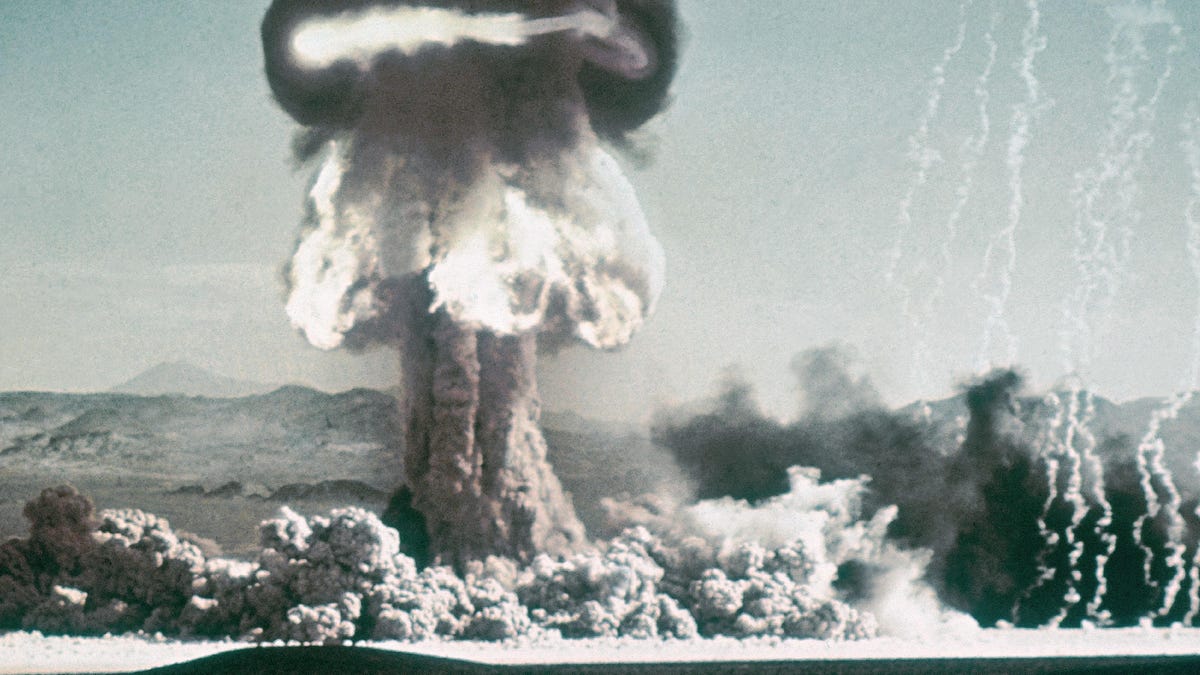Radioactive carbon from nuclear bomb tests found in ocean's deepest trench
20,000 feet under the sea, researchers find carbon from nuclear bombs has made its way into the food chain.

During the 1950s, nuclear bomb tests were conducted at Bikini Atoll in the Pacific Ocean
Scientists studying crustaceans in the Earth's deepest oceans have discovered radioactive carbon, first released into the atmosphere from nuclear testing in the 1950s and 1960s.
The team, from the Chinese Academy of Sciences, studied the levels of radioactive carbon in amphipods, a type of crustacean that resemble miniature shrimp, in the trenches of the west Pacific Ocean. Amphipods can live at a depth beyond 20,000 feet in an area known as "the hadal zone" and feed on dead organisms and matter that sinks down from the ocean surface.
The study, published in the journal Geophysical Research Letters, reveals that human pollution at the surface can quickly penetrate the deepest parts of the planet -- and radioactive carbon has found its way to the ocean floor at a rate faster than expected.
The team looked for a specific isotope of carbon-14, a radioactive carbon that is usually created when radiation from space collides with nitrogen in the atmosphere. It's not particularly dangerous, but it is a useful radioactive isotope for science.
Earth isn't naturally rich in carbon-14, but it is present in living organisms and accounts for just trace amounts of carbon in the natural world. Nuclear tests in the mid-20th century doubled the amount of carbon-14 in the atmosphere and eventually this fell to the surface -- including the surface of the ocean.
Scientists found carbon-14 levels in amphipod muscle tissue, at some of the deepest points on Earth, including the Mariana trench, was much higher than the levels of carbon-14 in organic matter at the same depth. And the contents of the amphipods "stomachs" showed levels of carbon-14 similar to the levels founds at the surface of the Pacific Ocean. Their findings suggest the tiny crustaceans have a preference for feeding on organisms that float down from the surface.
In addition, the amphipods may have a slower metabolism and a lower cell turnover than their more surface-bound counterparts, which would mean they can accumulate the radioactive carbon over time.
"There's a very strong interaction between the surface and the bottom, in terms of biologic systems, said Weidong Sun, a geochemist at the Chinese Academy of Sciences, in a press release. "Human activities can affect the biosystems even down to 11,000 meters, so we need to be careful about our future behaviors."

